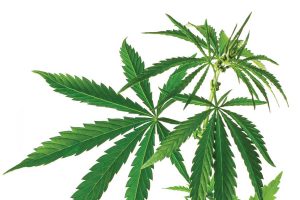CU professor leads effort to map the Cannabis genome
22 Sep 2016
A Map Into Uncharted Territory
By Sophie Goodman There’s a little bit of an Indiana Jones streak in Nolan Kane. But instead of searching for lost artifacts in remote corners of the world, Kane and his research team at the Cannabis Genomic Research Initiative are constructing the genomic map of the ever mysterious, understudied and politically charged cannabis plant. The implications of this groundbreaking evolutionary, ecological and gene-sequencing work are vast and will do no less than revolutionize the marijuana industry in terms of plant breeding, trait selection and myriad medical applications. Kane, 39, an expert in sunflower evolutionary biology, arrived in CU Boulder in fall 2013 from a postdoctoral position at the University of British Columbia. The timing was perfect. Colorado residents had voted in November 2012 to legalize recreational marijuana and industrial hemp-growing operations, and the legal cloud that had shrouded cannabis research for so long was slowly lifting. It was the challenge of “building the basic science knowledge of cannabis from the ground up” and applying modern sequencing techniques to the unstudied organism that most excited Kane, the CU administration and Dr. Daniela Vergara, an evolutionary biologist pursuing postdoctoral work in genomics in Kane’s lab. Though a scattered 60,000-piece outline of the genome already existed, no one had yet attempted to sequence the 800-million–nucleotide (A’s, T’s, G’s and C’s) Cannabis genome in any useful way.To learn more about the Cannabis Genomic Research Initiative, visit www.cannabisgenomics.org. Additionally, visit www.cannabisgenomics.org/cannadata to see how you can contribute to Nolan Kane’s ongoing research.“I’ve dealt with some intricate genetics in my career. The sunflower genome is about four times as big [as the cannabis genome], and its repetitive construction is a lot more complicated,” Kane explains, “but cannabis has come with a whole new set of complications.” Despite the challenges of working through legal gray areas and a lack of state grant funding, Kane has embraced the opportunity to study the fraught organism. For example, Kane had hypothesized that there would be limited genetic variation in Colorado cannabis, because people had to bring it in illegally for so long, and because Colorado is so far from Eurasia, the plant’s natural growing habitat. What his lab has found, in fact, is that cannabis genetics in Colorado—both bred and feral—are wildly varied. It’s complicated their research and has been a surprising find.
Research Goals
The Cannabis Genomic Research Initiative was established to determine the biology of the plant, and where it came from and how it grows. It addresses four specific research goals: 1. Create an ultra-high-density genetic map; 2. understand the relationships of different lineages and how different traits found in plants that naturally grow in different geographies map onto genetic diversity (are indica and sativa actually separate lineages in the genus?); 3. study contemporary hybrid species to identify history and relationships across species; and 4. identify morphological variation—leaf shape—among lineages in the genus.












